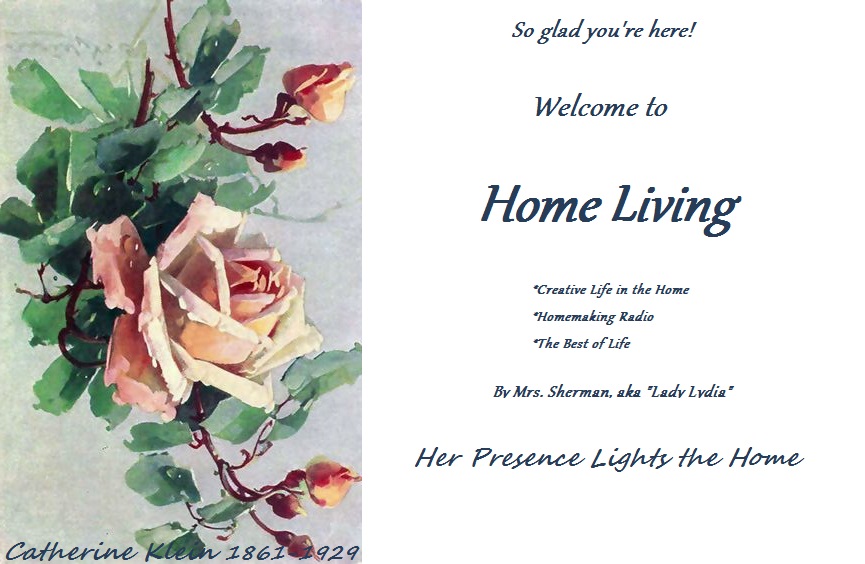The Material Market
by Jules Trayer, France 1824-1908
Adding piping to the neckline of a cotton dress will make the garment last a lot longer. The seam of the neckline is less likely to fade or wear thin. I hope I can demonstrate adequately how to apply piping, but if you need more help, try searching some free sewing videos online, or find some "sewing piping" tutorials on sewing sites.
Although it is not necessary to have a facing, when sewing piping on a neckline of a dress or blouse, I find a facing helps keep the edges of the trim concealed and the stitching hidden, as well as making it lie flat. Before applying this trim, join the front and back shoulder seams of the garment, press them open, and then, with right side facing you, lay the piping trim down on the neckline, with the rounded edge toward the body of the dress, and the raw, unfinished edge of the piping toward the neck, as shown, above.
Put the top raw edge of the piping trim right on top of the raw edge of the dress neckline, on the outside of the fabric (not the inside). Stitch along the same stitching that is already on the piping, all around the dress neckline.
Piping is hard to cut and join in a smooth way, so this is how I finish it: curve the end pieces downward off the fabric and stitch them. The white stitching is my own machine stitch, so you can see where I sewed. The other side of that stitching will be your guide for sewing the facing.
Prepare your facing by joining the shoulder seams, pressing the seams open. Iron a one-fourth inch hem on the facing and stitch it all the way around.
The piping will be between the facing and the dress bodice. Put the dress part, with the under side showing, up, for the machine stitching. This is where you will see the previous stitching of the piping showing through.
Lay the facing on the inside of the dress and then, on the outside of the dress, stitch along the previous stitching line--the one that holds the piping. That way, the facing and the piping are on the exact same stitching line.
With scissors, trim the excess fabric to about a fourth inch and then make a close zig-zag or some kind of edging stitch on the cut edge. Turn the facing to the inside of the dress and press with a hot iron. Hand-stitch the facing to the inside of the dress, all along the lower edge of the facing piece.
Here is the finished dress. I had to piece it in several places, because there was so little of the fabric.That means that instead of putting a pattern piece on a whole length of fabric, I sewed small pieces together and then laid the pattern for the sleeves, and part of the hem.
I have used this pattern and added sleeves that I liked better, from another pattern. This style is so easy, having only a front and back and facings and sleeves. I have done many different things with it, including adding a bias ruffle at the hem, different trims at the neckline, and a variety of sleeves. The neckline needs to be raised, but not a lot. If you want to make a dress in a day, this is the perfect pattern, or if you need to sew for someone else, this one has very little stress involved.
Here's a sewing tip you might like: If you have a pattern that you would like to use again, or one that has become a favorite, take the dress you just cut out, and lay that fabric on top of some new fabric, and cut around it. It is a lot easier to do that, than to get the tissue or paper pattern out and anchor it down and cut around it. The fabric "pattern" from the previous dress pieces clings more easily to the fabric, and does not move when you cut around it.
A couple of weeks ago I showed my experiment making a shirred blanket on the machine. Here is a much easier way to make an interesting, dimensional type blanket or spread. This is a fabric called Minky, which looks like the old fashioned ball fringe and chenille bedspreads. I quite like it, even though I prefer natural wovens, and it looks good as a bed spread. It does not need to be hemmed, but some matching ball fringe would look nice around the edges.
This is what it looks like on the bed. It is a very soft fabric and very pleasant to the touch. You can wash it and hang it out to dry and it will not get stiff or scratchy.
I am going to experiment again, and make a little jacket to match a dress, with the green color Minky.
See also, How to Make Your Own Piping from string and bias cut fabric




























.jpg)
.jpg)



.jpg)
.jpg)


.jpg)



















